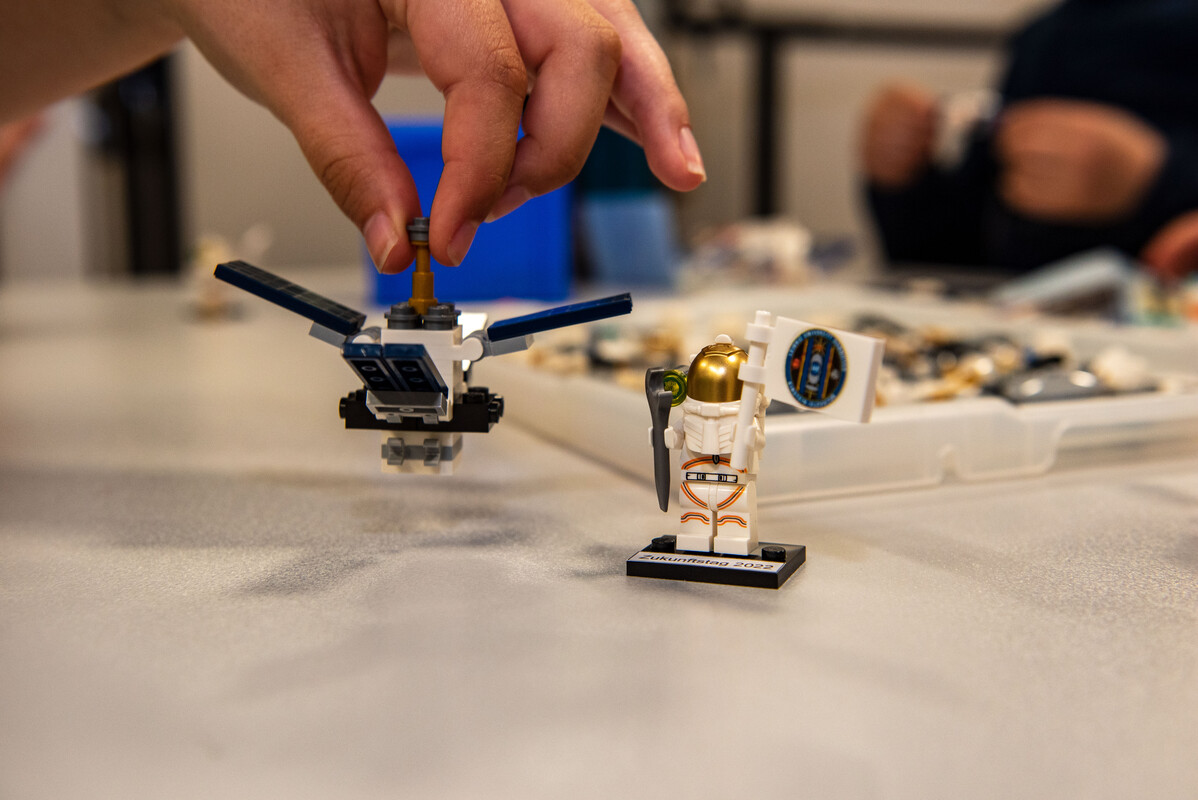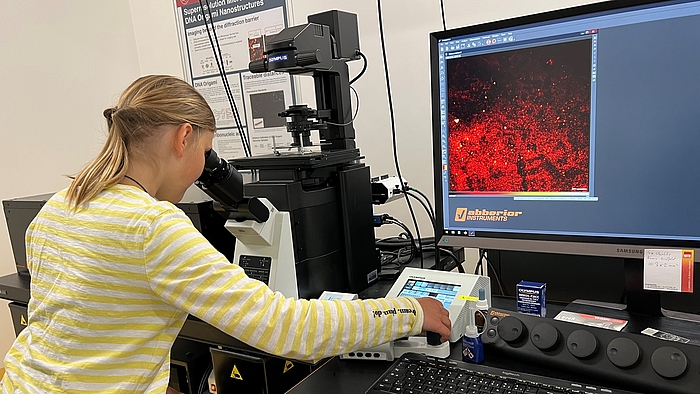The Einstein Elevator at the Hannover Institute of Technology (HITec) is a 40-metre-high drop tower facility unique in the world. The outwardly inconspicuous building is filled to the ceiling with state-of-the-art technology. An experimental capsule can be shot up from the basement and dropped in a controlled manner, creating a state of weightlessness for four seconds. In this way, scientists can simulate research in space without having to launch rockets.
Professionally guided by experienced mechanical and electrical engineers, the girls were able to prepare and carry out a small experiment on weightlessness themselves. The objects of investigation were numerous female astronauts and satellites built from Lego bricks, which were placed in a metal box inside the experiment capsule. Along the way, the schoolgirls learned everything that is necessary to carry out such an experiment and gained a realistic insight into the daily routine of research – from the calibration of the measuring instruments to the exact alignment of the capsule in the drop tower and the necessity of strict safety precautions.


 ©
Lena Wöhler / LUH
©
Lena Wöhler / LUH


 ©
Lena Wöhler / LUH
©
Lena Wöhler / LUH
Like a movie: The capsule only starts when two buttons are pressed at the same time
The group followed the actual flight of the research capsule and the weightlessness of its objects of investigation from the control room. For safety reasons, two buttons several metres apart have to be pressed simultaneously to launch the capsule. To the great delight of the young physicists, they were allowed to take over this cinematic action, including the countdown. Via a webcam flying along, they were then able to watch live how the Lego crew first entered a state of weightlessness, hovered for a few seconds and finally failed for the most part to land on their feet again. Together they then discussed how the experiment could be improved if it were to be repeated – just as adult researchers do.
At the end of the day, the students were enthusiastic about their visit. Some admitted that physics is not necessarily one of their favourite subjects. Hopefully, Girls' Day could play a small part in changing that.
Molecular Lego at LENA
At the LENA of TU Braunschweig, the schoolgirls learned about different aspects of nanotechnology and nanotechnology analysis: They were allowed to experiment on their own and prepare their own nanostructures from DNA using various methods such as centrifugation, pipetting or gel electrophoresis. These so-called DNA origami can be seen as molecular Lego, as in this way virtually any two- and three-dimensional structures can be produced, on which other small molecules such as dyes, metallic particles or even proteins can be arranged with nanometre precision. Since these nanostructures are not visible to the eye due to their size of around one hundred nanometres, special methods must be used for analysis.


 ©
Birka Lalkens/TU BS
©
Birka Lalkens/TU BS
One possibility is offered by the fluorescence-based STED microscope, whose invention was awarded the Nobel Prize in Chemistry in 2014. With this device, extremely small structures can be examined below the optical diffraction limit. To do this, dyes are specifically switched on and off so that the optical diffraction limit is overcome. The students used this microscope to examine various structures.









